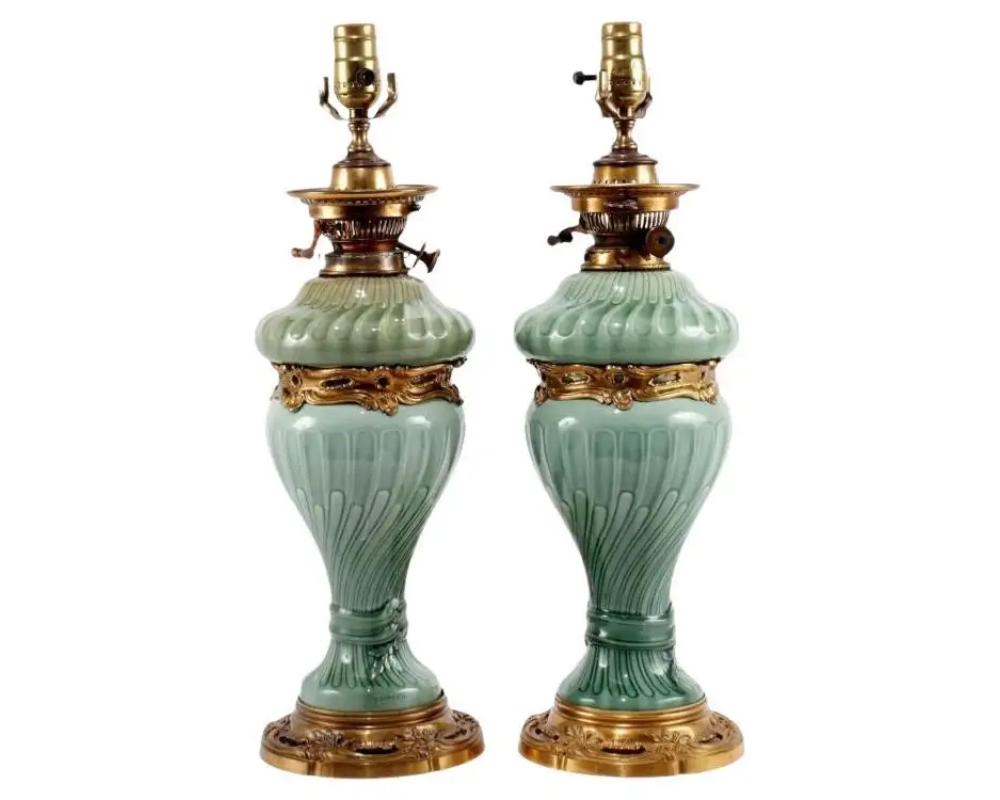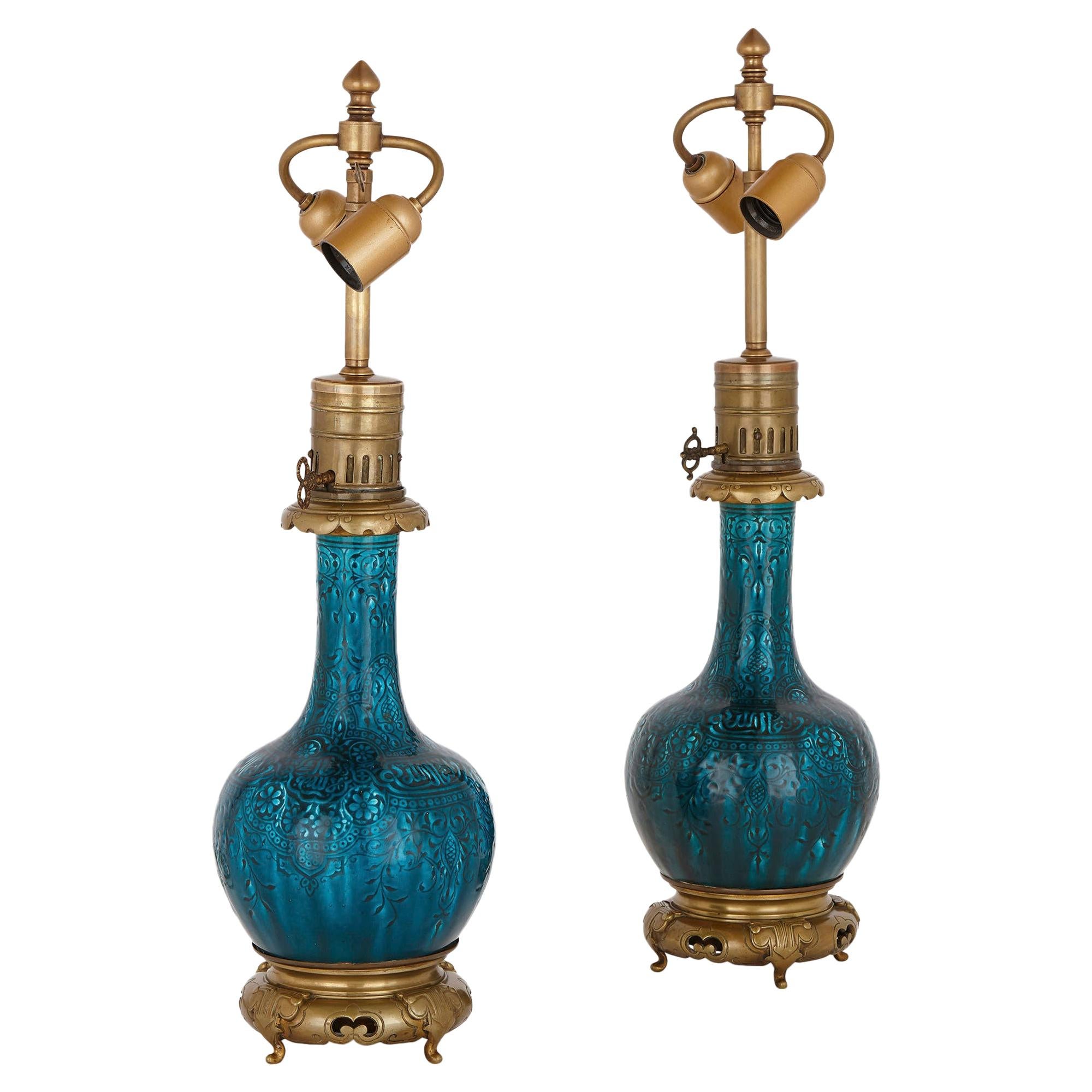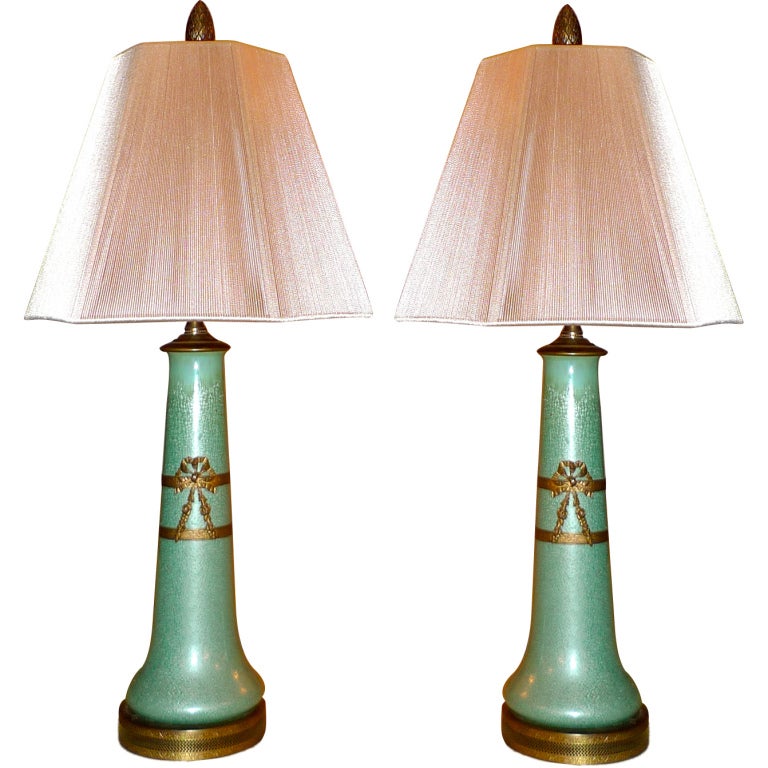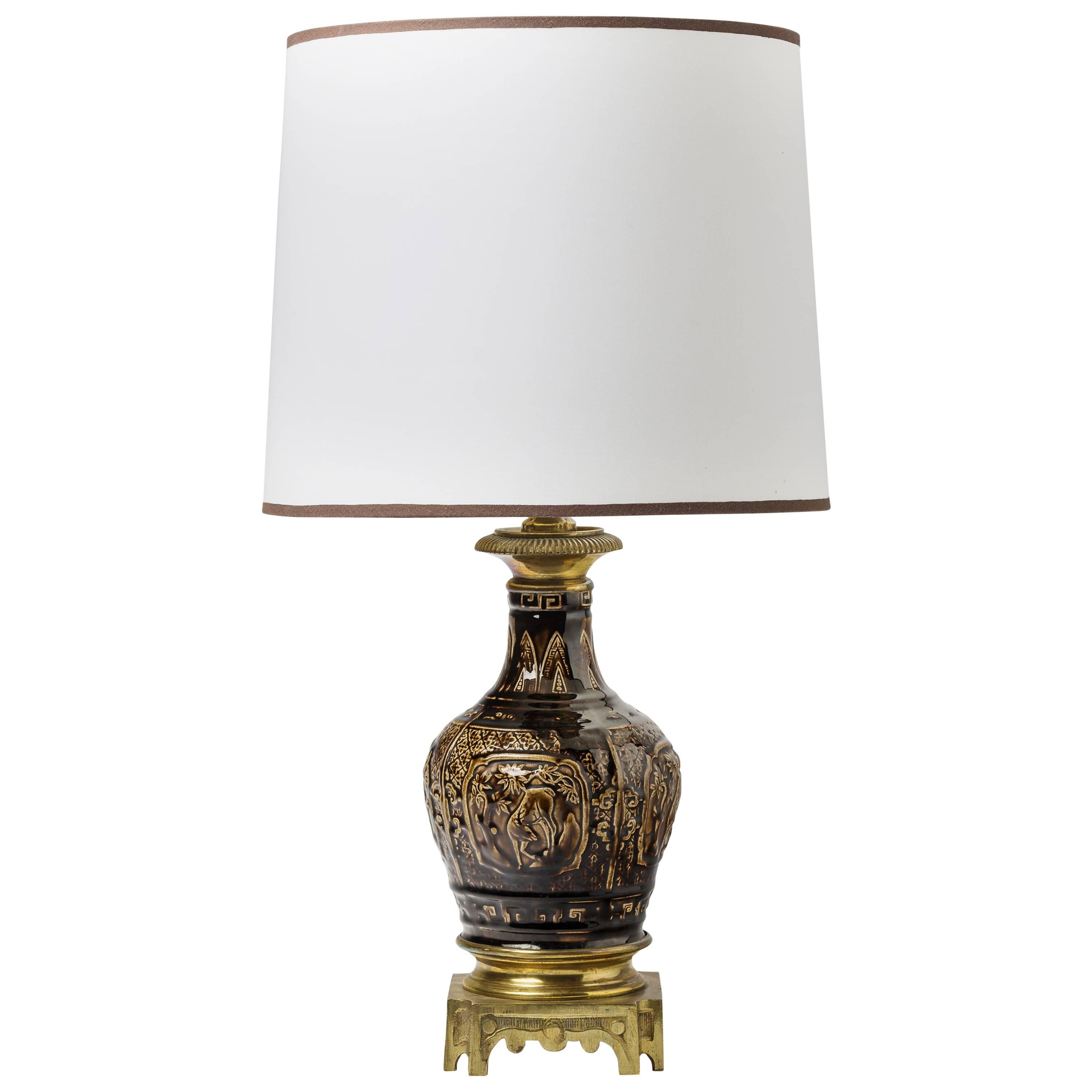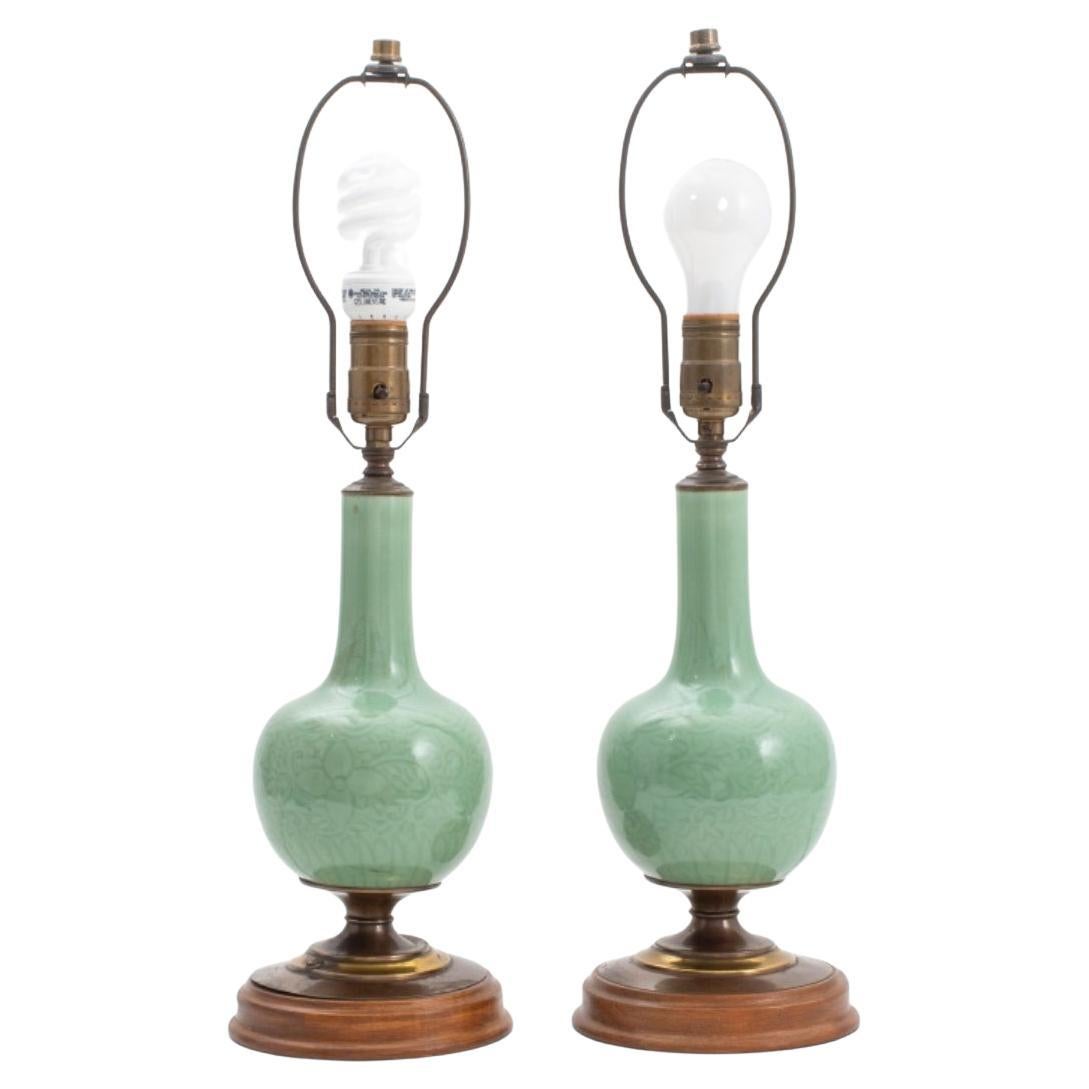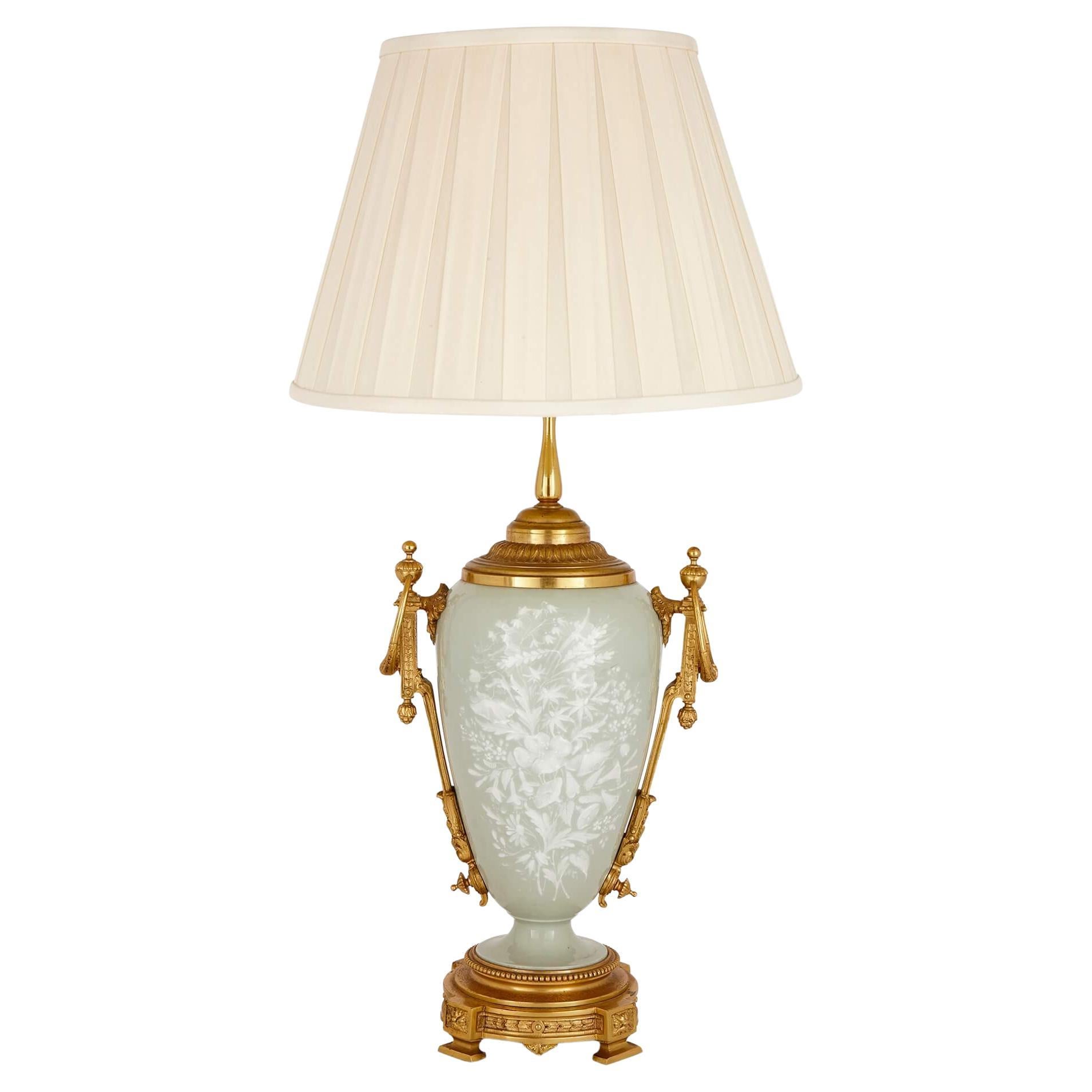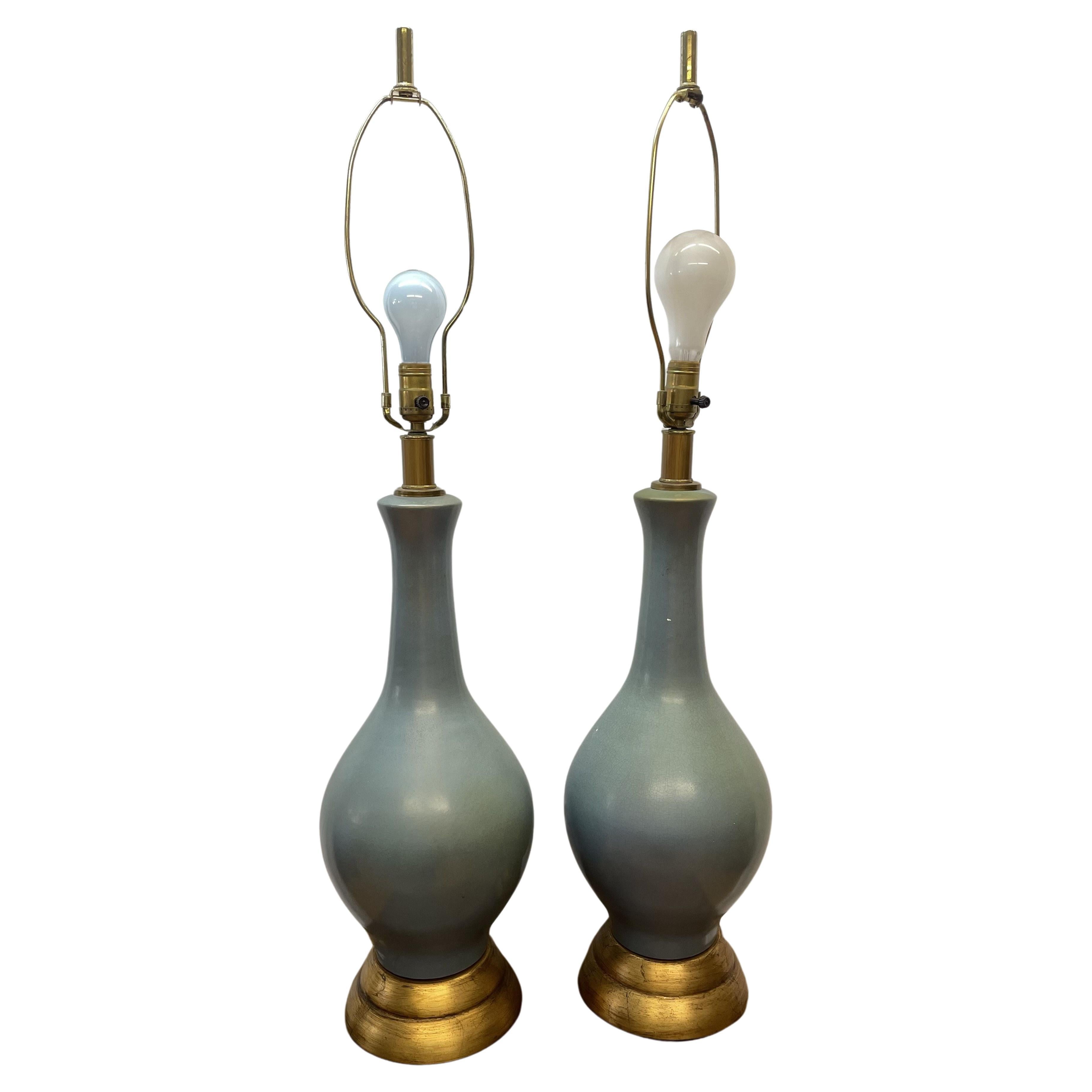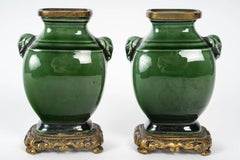
Pair of Théodore Deck Celadon Enamelled Faience Vases Ormolu-Mounted in Lamps
View Similar Items
Want more images or videos?
Request additional images or videos from the seller
1 of 18
Pair of Théodore Deck Celadon Enamelled Faience Vases Ormolu-Mounted in Lamps
About the Item
- Creator:Theodore Deck (Maker),Gagneau Paris (Metalworker)
- Dimensions:Height: 35.04 in (89 cm)Width: 7.49 in (19 cm)Depth: 7.49 in (19 cm)
- Sold As:Set of 2
- Power Source:Plug-in
- Voltage:220-240v
- Lampshade:Not Included
- Style:Chinoiserie (In the Style Of)
- Materials and Techniques:
- Place of Origin:
- Period:
- Date of Manufacture:circa 1875
- Condition:Wear consistent with age and use. As stated in the description and shown on the pics, few chips and one crack to the glass globes, still useful.
- Seller Location:Saint-Ouen, FR
- Reference Number:1stDibs: LU2612328388142
About the Seller
4.9
Vetted Seller
These experienced sellers undergo a comprehensive evaluation by our team of in-house experts.
1stDibs seller since 2017
57 sales on 1stDibs
Typical response time: 1 hour
More From This SellerView All
- Théodore Deck (1823-1891), Miniature Pair of Faience Vases circa 1870By Theodore DeckLocated in Saint-Ouen, FRTheodore Deck (1823-1891) A deep green enameled faience miniature pair of vases molded in the Chinese Archaistic Taste. Coves in the shape of elepha...Category
Antique 1870s French Chinoiserie Vases
MaterialsFaience
- Pair of Porcelain Vases Ormolu-Mounted in Lamps by Gagneau Paris XIXth CenturyBy Gagneau ParisLocated in Saint-Ouen, FRPair of large Japanese Porcelain Cone Shape Vases with Imari decoration Important mounts in ormolu and gilded metal, the base decorated with a laurel wreath, the upper part of falling leaves and a frieze of knotted ribbon. The mounts signed Gagneau, 115 R. Lafayette. Circa 1860 With their original aluminium bulb cover and original gilding Vase it self Height 47 cm The Gagneau Company is one of the most famous lighting factories in Paris in the nine-teenth century, established in 1800 at 25 rue d'Enghien in Paris and later at 115 rue de Lafayette. She has participated in many exhibitions throughout this century. She began in 1819 with the Exposition des Produits de l'Industrie and later participated in the Universal Exhibitions where she was part of the jury in the category of art bronzes (class 25) at the Universal Exhibition in Paris in 1889. "Imari" was simply the trans-shipment port for Arita wares, from where they went to the for-eign trading outposts at Nagasaki. It was the kilns at Arita which formed the heart of the Japanese porcelain industry. Arita's kilns were set up in the 17th century, after kaolin was discovered in 1616. A popular legend attributes the discovery to an immigrant Korean potter, Yi Sam-Pyeong (1579–1655), although most historians consider this doubtful. After the discovery, some kilns began to produce revised Korean-style blue and white porcelains, known as Early Imari, or "Shoki-Imari". In the mid-17th century, there were also many Chinese refugees in northern Kyushu due to the turmoil in China, and it is said that one of them brought the overglaze enamel coloring technique to Arita. Thus Shoki-Imari developed into Ko-Kutani, Imari, and later Kakiemon, which are sometimes taken as a wider group of Imari wares. Ko-Kutani was produced around 1650 for both export and domestic market.Kutani Ware is characterized by vivid green, blue, purple, yellow and red colors in bold designs of landscapes and nature. Blue and white porcelain pieces continued to be produced and they are called Ai-Kutani. Ko-Kutani Imari for the export market usually adopted Chinese design structure such as kraak style, whereas Ai-Kutani for the domestic market were highly unique in design and are ac-cordingly valued very much among collectors. Ko-Kutani style evolved into Kakiemon-style Imari, which was produced for about 50 years around 1700. Kakiemon was characterized by crisp lines, and bright blue, red and green designs of dramatically stylized floral and bird scenes. Imari achieved its technical and aes-thetic peak in the Kakiemon style, and it dominated the European market. Blue and white Kakiemon is called Ai-Kakiemon. The Kakiemon style transformed into Kinrande in the 18th century, using underglaze blue and overglaze red and gold enamels, and later additional colors. Imari began to be exported to Europe when the Chinese kilns at Jingdezhen were damaged in the political chaos and the new Qing dynasty government halted trade in 1656–1684. Ex-ports to Europe were made through the Dutch East India Company, and in Europe the des-ignation "Imari porcelain" connotes Arita wares of mostly Kinrande Imari. Export of Imari to Europe stopped in mid-18th century when China resumed export to Europe, since Imari was not able to compete against Chinese products due to high labor costs. By that time, however, both Imari and Kakiemon styles were already so popular among Eu-ropeans that the Chinese export porcelain copied both, a type known as Chinese Imari. At the same time, European kilns, such as Meissen and English potteries such as Johnson Bros. and (Royal) Crown Derby, also imitated the Imari and Kakiemon styles. Export of Imari surged again in late 19th century (Meiji era) when Japonism flourished in Europe.Thus, in the western world today, two kinds of true Japanese Imari can...Category
Antique 1880s French Japonisme Table Lamps
MaterialsBronze
- Theodore Deck '1823-1891', a Japonisme Polychromed Faience Quadrangular VaseBy Theodore DeckLocated in Saint-Ouen, FRTheodore Deck (1823-1891) A Polychromed Faience quadrangular vase, decorated in a cartouche with butterfly and birds on branches of prunus and peonies in the Japanese Taste on a pu...Category
Antique Late 19th Century French Japonisme Vases
MaterialsFaience
- Théodore Deck (1823-1891) Faience Paneled Fourteen-Tile Rectangular Wall PlaquBy Theodore DeckLocated in Saint-Ouen, FRA Théodore Deck (1823-1891) Faience Paneled Fourteen-Tile Rectangular Wall Plaque Polychromic Earthenware very finely hand-painted, designed with a couple of pheasants among vegetat...Category
Antique 1870s French Japonisme Decorative Art
MaterialsFaience, Wood
- Théodore Deck (1823-1891), an Impressive 19th Century Faïence ChargerBy Theodore DeckLocated in Saint-Ouen, FRThéodore Deck ( 1823-1891) Impressive polychromed circular faience charger with hand-painted enameled design of a wader among water lilies and reeds. Impressed Uppercase Mark Th.Dec...Category
Antique 1870s French Japonisme Ceramics
MaterialsFaience
- Émile GALLE (1846-1904) "Paysage Vosgien" Glass Lamp circa 1900By Emile GalléLocated in Saint-Ouen, FRÉmile GALLE (1846-1904) "Paysage Vosgien" A multilayer glass lamp by Gallé With an etched decor of a green and blue Vosgien landscape on the foot and of flying eagles on the lamps...Category
Antique Early 1900s French Art Nouveau Table Lamps
MaterialsBronze
You May Also Like
- Pair of French Theodore Deck Ormolu-Mounted Celadon Porcelain LampsBy Theodore DeckLocated in New York, NYA Pair of French Theodore Deck ( 1823-1891) Ormolu-Mounted Celadon Porcelain Lamps, circa 1870. A very elegant pair of celadon green porcelain lamps in the Chinese taste, mounted ...Category
Antique 19th Century French Table Lamps
MaterialsOrmolu
- Pair of Gilt Bronze and Faience Lamps, Attributed to Théodore DeckBy Theodore DeckLocated in London, GBThese beautiful table lamps have been attributed to Joseph-Théodore Deck, one of the most important ceramicists of the 19th century. Deck was the director of a prestigious faience wo...Category
Antique Late 19th Century French Islamic Table Lamps
MaterialsBronze, Ormolu
- Pair of Gilt Bronze Mounted Faience Lamps by DeckBy Gagneau Frères, Theodore DeckLocated in London, GBThese beautiful table lamps are by Théodore deck, one of the most important ceramicists of the 19th Century, and Gagneau Frères, a leading bronzier. Deck was the director of a presti...Category
Antique Late 19th Century French Vases
MaterialsOrmolu, Bronze
$15,357 / set - Pair of French Ormolu-Mounted Celadon Enamel Vases as LampsLocated in Hanover, MASATURDAY SALE (1/18) Pair of celadon crystalline enamel vases as lamps with 19th century French ormolu ribbon and banding. Bases and caps are brass the color of bronze. Shades are...Category
Antique 19th Century French Louis XVI Table Lamps
$2,600 Sale Price / set27% Off - Pair of "Blue Glaze" Lamps Made by Theodore DeckBy Theodore DeckLocated in Ciudad Autónoma Buenos Aires, CPair of Blue Glaze ceramic table lamps, with bronze base and stem, made by Theodore Deck (1823-1891). Signed HT DECK, MADE IN FRANCE, F...Category
Antique 1880s French Art Nouveau Table Lamps
MaterialsBronze
$50,000 / set - Theodore Deck Beautiful Table Lamp Year 19th CenturyBy Theodore DeckLocated in Neuilly-en- sancerre, FRExtraordinary table lamp by Theodore Deck. Porcelain with signature T and mark. Sold with the lampshade and electrical system. Perfect original conditions.Category
Antique 1880s French Art Nouveau Table Lamps
MaterialsCeramic
Recently Viewed
View AllMore Ways To Browse
Both Paris
Oil Used In Lamp
Antique Enamel Table
Enamel Table Antique Tables Enamel Tables
Enamel Antique Table
Enamel Antique Tables Enamel Tables
Antique Lighting Collections
Antique Fair Paris
Antique Furniture Sales
Green Enamel Lamp
Antique Industrial Lamp
Industrial Antique Lamp
Antique Industrial Lamps
Industrial Lamp Antique
Industrial Lamp Antique Furniture
Pair Of Enameled Table Lamps
Pair Paris Lamps
Antique Lamp Collection

